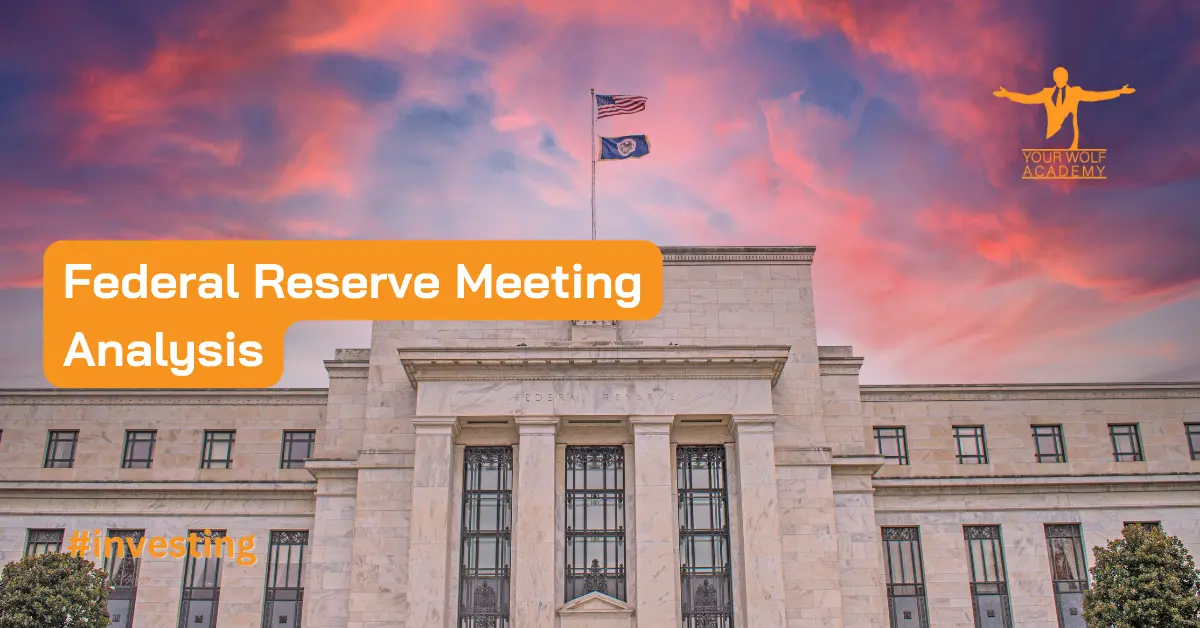In this comprehensive report, we delve into the upcoming Federal Reserve meeting scheduled for Wednesday and analyze the crucial insights and expectations that could impact the financial landscape.
As we approach this critical event, it is imperative for investors and market participants to be well-informed about the potential implications it may have on the economy and various sectors.
In this article, we provide an in-depth analysis to help you gain a competitive edge in navigating the financial markets.
Introduction: Setting the Stage for the Federal Reserve Meeting
The Federal Reserve, often referred to as the Fed, is the central banking system of the United States. Its primary objective is to maintain stable economic growth and control inflation. Throughout its existence, the Fed has implemented various monetary policies to achieve these goals.
The Federal Reserve meeting, held periodically, is where policymakers convene to discuss the current economic conditions and make decisions regarding interest rates, quantitative easing, and other crucial monetary policies.
Economic Indicators and Their Impact on the Meeting
Before we delve into what to expect from the upcoming Federal Reserve meeting, let’s first explore the economic indicators that have shaped the current financial landscape. The performance of these indicators provides valuable insights into the potential actions the Fed may take.
1. GDP Growth Rate
The Gross Domestic Product (GDP) growth rate is a key indicator of economic health. A robust GDP growth rate often signals a healthy economy, while a slowdown may indicate economic challenges. The Fed closely monitors GDP growth to assess the overall economic performance and make informed decisions during its meetings.
2. Inflation Rate
Inflation, the rise in the general price level of goods and services, is a critical factor considered by the Federal Reserve. Moderate inflation is generally healthy for the economy, but runaway inflation can erode purchasing power and disrupt economic stability. The Fed employs various tools to control inflation and aims to maintain a target inflation rate.
3. Unemployment Rate
Employment data and the unemployment rate are crucial indicators that influence the Fed’s decisions. A low unemployment rate suggests a strong job market and overall economic growth, while high unemployment rates may lead to accommodative monetary policies to stimulate job creation.
Anticipated Monetary Policy Actions
Given the current economic landscape, several actions could be anticipated during the upcoming Federal Reserve meeting.
1. Interest Rate Decision
One of the most critical aspects of the meeting is the decision on interest rates. The Federal Open Market Committee (FOMC), responsible for setting monetary policy, will evaluate economic indicators and inflationary pressures to determine whether to maintain, raise, or lower interest rates. Any change in interest rates can significantly impact borrowing costs, investment decisions, and consumer spending.
2. Quantitative Easing (QE) Measures
Quantitative easing is a monetary policy tool employed by the Fed to inject liquidity into the financial system. By purchasing government securities or other assets, the Fed aims to stimulate economic growth and maintain market stability. The meeting may shed light on the continuation or scaling back of QE measures based on economic conditions.
3. Forward Guidance
Forward guidance refers to the communication provided by the Fed about its future monetary policy intentions. Clarity on the path of interest rates and economic projections can influence market expectations and investor behavior.
Potential Market Reactions
Financial markets are highly sensitive to any announcements made during the Federal Reserve meeting. As such, it is essential to anticipate potential market reactions.
1. Stock Market
Equity markets tend to react strongly to changes in interest rates and monetary policy decisions. A dovish approach (indicating accommodative measures) may boost stock prices, while a hawkish approach (signaling tightening policies) could lead to temporary declines.
2. Bond Market
The bond market closely tracks interest rate movements. If interest rates are expected to rise, bond prices may fall as investors seek higher yields. Conversely, lower interest rates could lead to increased demand for bonds.
3. Currency Markets
Currency markets are highly sensitive to changes in interest rates and monetary policies. A higher interest rate environment may strengthen the currency, while a lower interest rate environment could lead to currency depreciation.
Conclusion: Navigating the Financial Landscape
As we await the outcomes of the Federal Reserve meeting, it is crucial for investors and businesses to stay informed and prepared for potential market shifts. Monitoring key economic indicators, anticipating monetary policy actions, and understanding potential market reactions can provide a strategic advantage in navigating the financial landscape.
In conclusion, understanding the Federal Reserve meeting and its potential outcomes can be instrumental in making informed financial decisions. By staying up-to-date with economic indicators, anticipating the Fed’s monetary policy actions, and being aware of possible market reactions, investors can position themselves advantageously in an ever-changing financial landscape.
Remember, keeping a close eye on the Fed’s decisions can make all the difference in your investment strategies and financial success.


